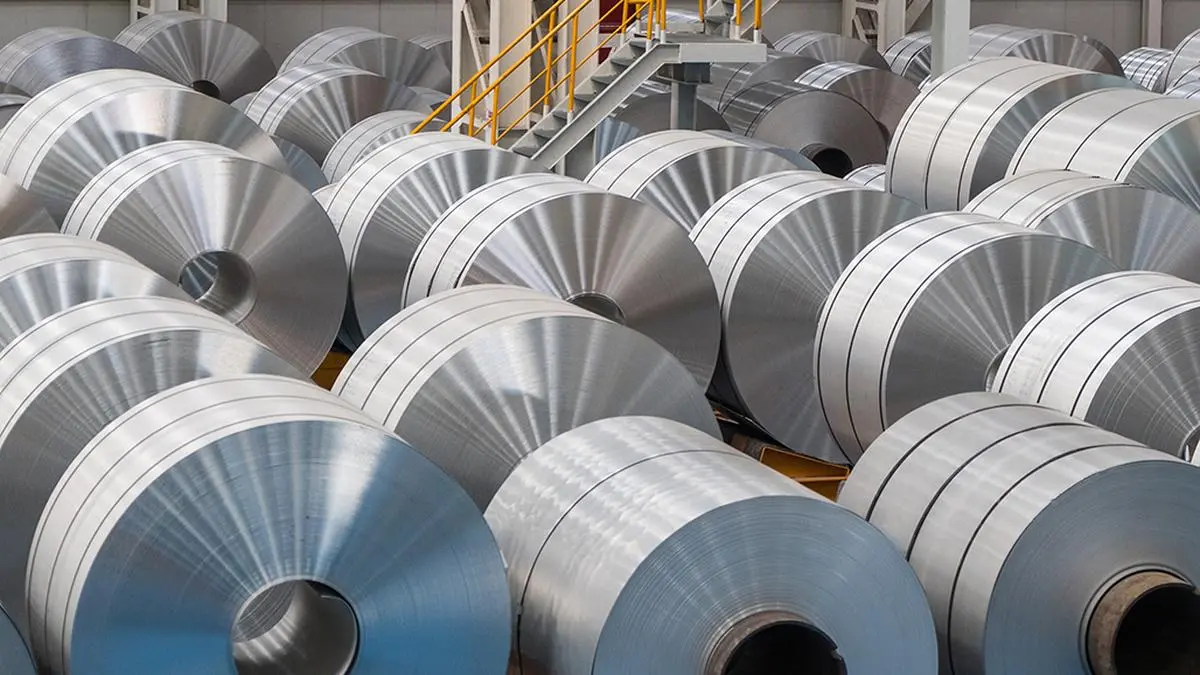Aluminium prices are likely to remain elevated for the remainder of 2025, underpinned by a weakening dollar and stable demand in China, the leading aluminium consumer globally, say analysts.
Aluminium prices hit a three-year high of over $2,700 a tonne on Tuesday before paring gains in early trade on Wednesday on the London Metal Exchange (LME).
The white metal, used in aircraft, transport, construction, cans and cooking appliances, was quoted at $2,687.75 a tonne at 1715 hours IST.
“Although persistent geopolitical risks, soft global demand prospects and tariff headwinds linger as downside risks, the spotlight is moving to US policy expectations, a softer dollar and stable Chinese demand, pointing to upside potential,” said research agency BMI, a unit of Fitch Solutions.
Price forecast
ING Think, the economic and financial analysis wing of Dutch multinational services firm ING, said LME aluminium prices extended their upward rally for an eighth consecutive session on Tuesday, and prices closed at the highest level since February 20, 2025.
Prices were driven by expectations of a US Federal Reserve rate cut this week and a weaker dollar index (the lowest level since 2022).
The aluminium tom-next spread (cost of rolling positions overnight) traded at a premium of $13.25/t (the highest since August 2024), after remaining in contango (when spot prices are lower than future contracts) for several weeks, indicating rising physical demand and tightening LME inventories.
“We are maintaining our aluminium price forecast at an annual average of $2,580/tonne,” said BMI. Aluminium prices have demonstrated resilience in 2025 thus far, up over six per cent the year-to-date.
The Australian Office of the Chief Economist (AOCE) said pricing and demand volatility are expected to persist for the remainder of 2025 in aluminium, due to trade actions and retaliatory measures. The LME aluminium spot price is forecast to average about US$2,475 a tonne in 2025, it said.

Bullish bets up
The research agency said the metal will be supported by macroeconomic tailwinds and firmer-than-expected supply–demand fundamentals, despite the rollout of newly imposed US aluminium tariffs and ongoing geopolitical uncertainty.
ING Think said recent LME data show that aluminium exchange stocks fell by 1,500 tonnes to 483,375 tonnes, while on-warrant inventories continued to hover at lower levels and stood at 375,025 tonnes (the lowest since July 8, 2025) on September 16.
The latest COTR report shows that net bullish bets in aluminium rose by 4,562 lots for a fourth straight week to 131,922 lots for the week ending September 13, the most bullish bets since the week ending on June 7, 2024, the ING arm said.
BMI said for the remainder of the year, it sees risks to its forecast as broadly balanced but modestly skewed to the upside. “To a lesser extent, supply-side issues in the raw materials market also have scope to support prices amid ongoing resource nationalism risks in Guinea,” it said.
New demand for EVs, tech
“We expect further US dollar weakness—down 10.6 per cent in the year-to-date and 1 per cent month-on-month as of September 5—to remain a key tailwind for aluminium prices in the coming months. Markets are now fully pricing in at least a 25 basis points Fed cut in September, as weak August unemployment data and Chair Powell’s recent remarks at the Jackson Hole Symposium stoke concerns about slower-than-expected US growth,” said the research agency.
The AOCE said: “Growing global demand for new, energy-efficient cars and technologies will lift aluminium usage and keep stocks relatively low. The FOB Western Australia alumina price is forecast to fall from $492 a tonne in 2024 to $365 a tonne in 2027,” it said.
BMI said the Chinese demand is set to place a floor under the metal’s prices. “Though we do not expect growth to match the pace of the past decade, given ongoing property-sector weakness and wider external pressures, we have recently revised up (albeit modestly) our forecast for China’s aluminium demand growth in 2025 to 1.5 per cent (from 0.5 per cent previously),” it said.
Suppy-side strains
The research agency now anticipates stronger growth in China, despite geopolitical uncertainties, driven by demand from the clean energy sector (solar, wind, grid and EVs). “Given aluminium’s heavy use in solar, wind, grid equipment and EVs, this growth points to steady end-use demand in 2025, helping to support prices and limit downside risk despite broader headwinds,” it said.
BMI said supply-side strains in raw materials are also poised to underpin prices. Guinea’s move to revoke Emirates Global Aluminium’s bauxite mining licence in early August has raised the prospect of tighter global bauxite supply.
On the demand side, softer prospects outside China will likely cap price upside, most notably in the US. Persistent macroeconomic uncertainties and Trump’s volatile policymaking present a persistent downside risk to our aluminium price forecasts in the coming months, said BMI.
Published on September 18, 2025
